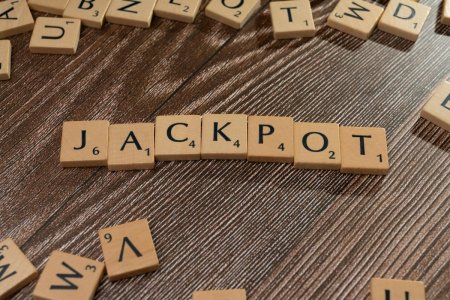How one couple used math to win $25 million from the lottery
By
Veronica E.
- Replies 0
Many dream of winning big in the lottery—but most just buy a ticket, hope for the best, and leave it to chance.
But what if there was a way to boost your odds, not with luck, but with math and timing?
That’s exactly what one Michigan couple did, and their story has sparked curiosity, debate, and a closer look at how the lottery really works.
Jerry and Marge Selbee weren’t professional gamblers.
They were simply observant—and Jerry, in particular, had a good head for numbers.
What they discovered was something called the "rolldown" feature in a lottery game called Cash Winfall.
With the right timing and strategy, they turned their simple method into more than $25 million in winnings.

In certain lottery games, when no one wins the jackpot, the prize money doesn’t keep growing—it gets “rolled down” into the smaller prize tiers.
This means people who match fewer numbers suddenly receive much bigger payouts.
That’s the golden moment the Selbees were waiting for.
When they spotted an upcoming rolldown, they’d buy hundreds of thousands of dollars' worth of tickets.
They weren’t playing random numbers hoping to win big—they were working the system during specific periods to scoop up more consistent, smaller wins.
According to Professor Tim Chartier, a math and computer science expert at Davidson College, it was less about chance and more about pattern recognition.
The couple took advantage of a system that wasn’t broken—but wasn’t built to expect players like them either.
The couple’s strategy was all about knowing when to play—not just how.
They studied the numbers, watched for upcoming rolldown events, and struck when the odds were most in their favor.
While others played their “lucky numbers,” the Selbees relied on calculations and data.
This wasn’t a get-rich-quick scheme.
It was disciplined, thoughtful, and surprisingly successful.
They reportedly invested as much as $600,000 in a single round—confident that the math would work in their favor.
The story does raise a few eyebrows.
After all, not everyone has that kind of money or the ability to crunch the numbers.
Some people admire the couple’s cleverness, while others question whether it was fair to outsmart a game designed to be random.
Eventually, the Massachusetts State Lottery shut down the Cash Winfall game, citing concerns over players exploiting the system.
It wasn’t illegal—but it certainly challenged the idea that the lottery is purely a game of chance.
Probably not.
Most modern lottery games are now tightly regulated to prevent this kind of exploitation.
Security has improved, and many games have removed features like rolldown altogether.
But the Selbees’ story still holds a lesson: understanding the system you’re playing can make all the difference.
Whether it’s picking a scratch-off ticket or entering a big draw, knowing the rules—and knowing when to play—might give you a better shot than luck alone.
Read next: Flying at 106: The unexpected airport moment that caught one woman off guard—twice a year

While most of us won’t invest hundreds of thousands into lottery tickets, the Selbees’ experience shows how observation, timing, and a little math can turn the odds—at least for a while. Have you ever tried a strategy for playing the lottery? Do you believe timing matters, or do you prefer to play it for fun? We’d love to hear your thoughts in the comments.
But what if there was a way to boost your odds, not with luck, but with math and timing?
That’s exactly what one Michigan couple did, and their story has sparked curiosity, debate, and a closer look at how the lottery really works.
Jerry and Marge Selbee weren’t professional gamblers.
They were simply observant—and Jerry, in particular, had a good head for numbers.
What they discovered was something called the "rolldown" feature in a lottery game called Cash Winfall.
With the right timing and strategy, they turned their simple method into more than $25 million in winnings.

Some lottery players rely on luck—others, like the Selbees, used math and timing to win millions through a little-known strategy. Image Source: Pexels / Markus Winkler.
What is a “rolldown” in the lottery?
In certain lottery games, when no one wins the jackpot, the prize money doesn’t keep growing—it gets “rolled down” into the smaller prize tiers.
This means people who match fewer numbers suddenly receive much bigger payouts.
That’s the golden moment the Selbees were waiting for.
When they spotted an upcoming rolldown, they’d buy hundreds of thousands of dollars' worth of tickets.
They weren’t playing random numbers hoping to win big—they were working the system during specific periods to scoop up more consistent, smaller wins.
According to Professor Tim Chartier, a math and computer science expert at Davidson College, it was less about chance and more about pattern recognition.
The couple took advantage of a system that wasn’t broken—but wasn’t built to expect players like them either.
Also read: $83 million on hold? What’s delaying a major lottery payout
When timing meets math
The couple’s strategy was all about knowing when to play—not just how.
They studied the numbers, watched for upcoming rolldown events, and struck when the odds were most in their favor.
While others played their “lucky numbers,” the Selbees relied on calculations and data.
This wasn’t a get-rich-quick scheme.
It was disciplined, thoughtful, and surprisingly successful.
They reportedly invested as much as $600,000 in a single round—confident that the math would work in their favor.
Also read: The golden ticket to fortune: California woman’s solo victory in $1.2 billion Mega Millions jackpot
Is it smart—or unfair?
The story does raise a few eyebrows.
After all, not everyone has that kind of money or the ability to crunch the numbers.
Some people admire the couple’s cleverness, while others question whether it was fair to outsmart a game designed to be random.
Eventually, the Massachusetts State Lottery shut down the Cash Winfall game, citing concerns over players exploiting the system.
It wasn’t illegal—but it certainly challenged the idea that the lottery is purely a game of chance.
Also read: Stop bleeding cash: A finance guru reveals 8 habits you must break immediately!
Could this still happen today?
Probably not.
Most modern lottery games are now tightly regulated to prevent this kind of exploitation.
Security has improved, and many games have removed features like rolldown altogether.
But the Selbees’ story still holds a lesson: understanding the system you’re playing can make all the difference.
Whether it’s picking a scratch-off ticket or entering a big draw, knowing the rules—and knowing when to play—might give you a better shot than luck alone.
Read next: Flying at 106: The unexpected airport moment that caught one woman off guard—twice a year
Key Takeaways
- A couple used their basic math skills to take advantage of a lottery game’s rolldown feature and won over $25 million.
- Professor Tim Chartier explained that rolldowns allow jackpot money to boost lower-tier prizes when no one wins the top prize.
- The couple bought large amounts of tickets during rolldown weeks, improving their chances of winning multiple smaller prizes.
- Although modern lotteries now have tighter controls, Chartier noted that no system is entirely perfect and some imperfections can still exist.
While most of us won’t invest hundreds of thousands into lottery tickets, the Selbees’ experience shows how observation, timing, and a little math can turn the odds—at least for a while. Have you ever tried a strategy for playing the lottery? Do you believe timing matters, or do you prefer to play it for fun? We’d love to hear your thoughts in the comments.






